Educational Enhancements For Classrooms

Cara Barker was recently awarded a $1,000 grant sponsored by the Rotary Club of San Marino. Earlier in the fall, She applied for The William G. “Bill” Steele Mini Grant Program for Classroom Innovation, and her proposal was to provide students with audio recording equipment to help them with their music-making endeavors. As her grant application states, “Currently, the school has no dedicated audio recording equipment.These purchases will be used in the classroom during electives and summer school and will be made available for student performances at talent shows and music programs. Students will perform and record rhythm combinations, chordal intervals, and melody lines.
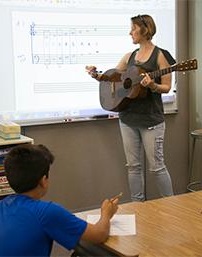
Students will compose and/or arrange their own backing tracks, will learn the basics in loop pedal function, how to manage the interface, and how to use the recording software. The grant will allow her to purchase a Boss Looping Station, a Focusrite Scarlet. Solo Interface, a Boss Effects Pedal and Boss power adapter, a Harbinger Vari Loudspeaker, and headphones.
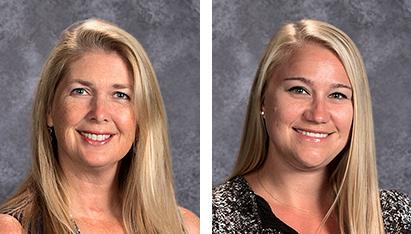
Joanna Kibbe and Rebecca Berge were recently awarded a $2,000 grant sponsored by the Rotary Club of San Marino. Earlier in the fall, they applied for The William G. “Bill” Steele Mini Grant Program for Classroom Innovation, and their proposal was to provide students with PocketLabs.
As their grant application states, “The PocketLab Voyager is an all in one lab sensor. Students can use the sensor to measure motion, light, magnetic fields, and weather. The sensors are easy to use and can stream real time data from its multiple sensors to a variety of devices where students can view, graph, and record data. The sensors can be used in every middle school science class. These sensors can also be used in cross curriculum activities. Science and math classes can use the sensors individually or in a joint project.
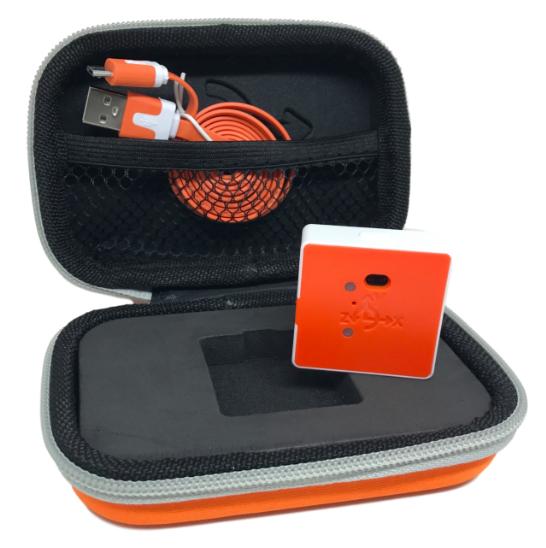
The sensors will be used to explore speed and velocity, acceleration, Newton’s Laws of motion, momentum, gravity , and friction. They will also be useful in the study of photosynthesis, bacteria growth, weather, and forces involved with earthquakes. Because the sensors can be used in a variety ways, students can design their own labs and investigations. For example, because the sensors can be attached to most solid objects, students can attach a sensor to the bowling ball pendulum and investigate speed, velocity, momentum, and angular velocity. The Maker Kits will allow the students to make cars and create their own lab with them, studying a particular aspect of motion. These sensors have award winning software that allows students to video the motion of the car, bowling ball, or other objects while capturing real time streaming data from the PocketLab sensor.
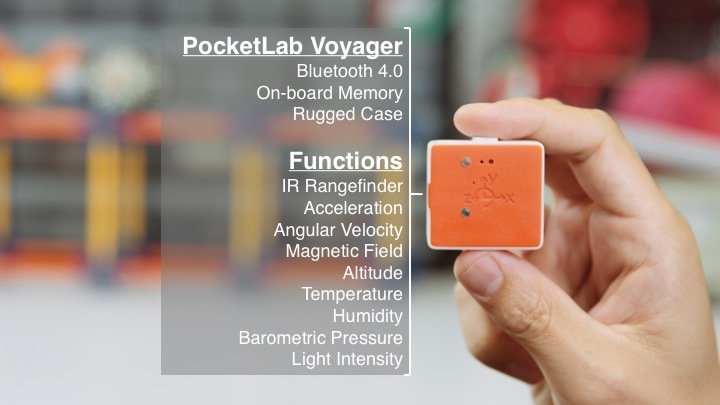
Though students have hands-on experience in the classroom, they will now be able to make a greater connection to the activities. Seeing the graphs being created as they are recording the experiment will help students visualize the relationship between the science and math involved in our activities. These amazing, easy to use, sensors will add an amazing component to our program. With the funds, they will purchase a classroom set of 10 Voyager PocketLab sensors, 10 Silicone Protective Cases, 10 Maker Kits, and a Bowling Ball Pendulum.” Way to go Mrs. Kibbe and Mrs. Berge!
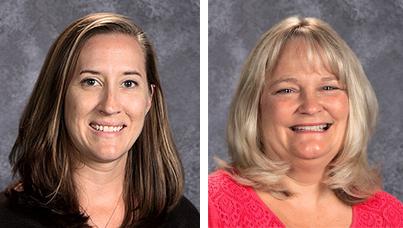
Annie Conner and Kris Shoemake were recently awarded a $2,000 grant sponsored by the Rotary Club of San Marino. Earlier in the fall, they applied for The William G. “Bill” Steele Mini Grant Program for Classroom Innovation, and their proposal was to provide students with outdoor S.T.E.M. education equipment. As their grant application states, “The following kinesthetic learning materials will open up a world of engineering opportunities which will incorporating scientific and mathematic concepts into their activities. Students can test theories, collaborate for problem solving, expand their vocabulary, and apply physical science and math concepts (weight, distance, momentum) all while being active on the playground, in the sand yard, or in the classroom. The materials are versatile and open ended allowing for natural inquisitive experimentation through trial and error.

Outdoor Ramps with Stands:The inclined plane is one of the six classical simple machines defined by Renaissance scientists. The outdoor ramps will provide opportunities for children to develop engineering play behaviors and to begin to understand and apply simple science and math concepts during their investigations. Children will create and test theories, refine designs, and collaborate with peers to solve problems. The ramps are made for water, balls, or sand and are a great way for children to interact with natural materials. We think the outdoor ramps will add many beneficial educational opportunities for growth and learning to our outdoor playground.
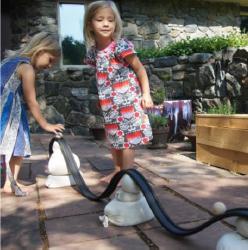
Rubber Ramps: These ramps are long and flexible and have the ability to make loops and spirals. Children can also use stackable stands to build hills and slopes to make the materials travel farther. They will provide more opportunities to explore aspects of engineering and practice social skill.
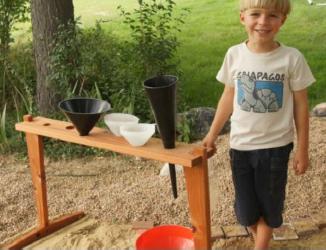
Outdoor Funnel Stand: This stand will elevate play and discovery in our outdoor space. At a height of 20 inches, children be able to scoop, pour, and observe the sand or water traveling through the funnels. It comes with enough funnels for everyone to participate.
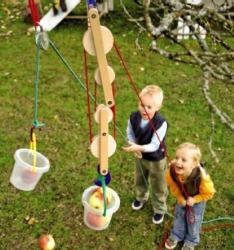
Block and Tackle Device: Children will put physics into action with the Block and Tackle. It is another simple machine which supports open-ended play and inspires children to wonder about energy, weight, load, and transport. We can suspend it from one of the trees in our play yard. The set comes with two fixed and two loose reels, which make it possible to lift heavy objects into the air. It can also be moved inside to be used in our science area.
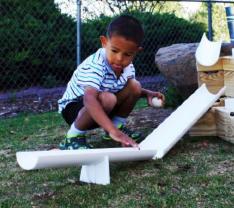
Teeter Totter Ramps: These ramps teeter from the balance point in the middle, and will form a focal point of our ramp system. As an addition to the outdoor ramp kits, this tool teaches additional lessons in weight, momentum, and cause and effect.
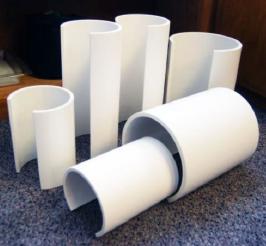
Outdoor Tunnels: The tunnel set adds structural dimension and provokes inquiry when added to the ramp kits. Children use their imagination to build unique configurations with the various size tunnels.

“See-Inside” Pipe: The “See-Inside” Pipe is a multi-use translucent pipe that will enhance ramp play and construction projects. It can also be used with our sand, water, and sensory exploration! Children will love to see materials flow through the pipe and observe cause and effect.”
Clairbourn School Provides Private School Education for Preschool, Kindergarten, Elementary School, and Middle School Grades | Serving Families in the Pasadena, California, Area and Surrounding Cities (K-12 Private Schools) | Clairbourn is a 501(c)3 charitable organization. Click here to request information.
